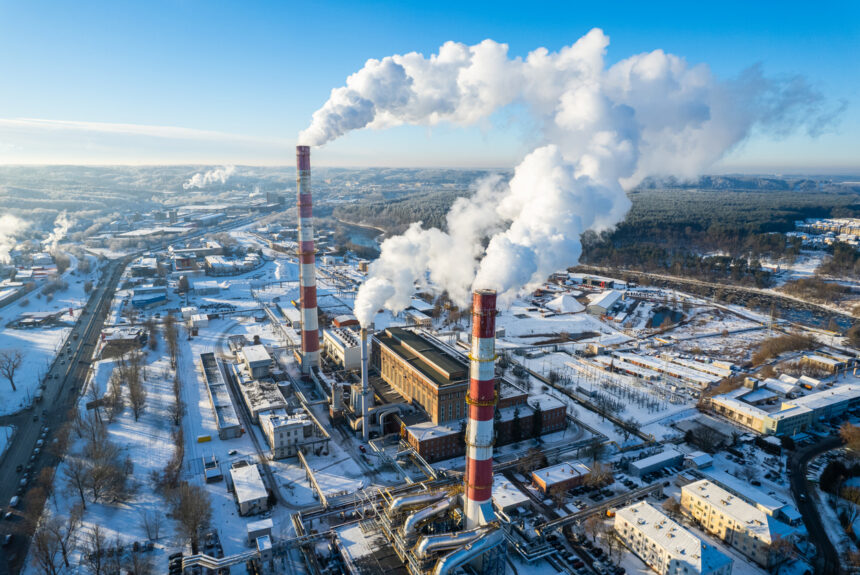Recent studies and reports have questioned the long-term viability of direct air capture (DAC) as a solution to reduce greenhouse gas emissions. The injection of money from governments, venture capital, and big businesses and stubbornly high costs have some analysts warning of a potential DAC bubble that is ready to burst. While the technology is still in its relative infancy, cost will be a determining factor for the future of DAC. Policies that increase competition and instill market discipline will help.
>>>READ: Investments in Carbon Dioxide Removal are Yielding Innovative Results
There is a large suite of carbon dioxide removal (CDR) solutions in the market. They include iron fertilization of the ocean, planting trees, and enhanced weathering where farms spread concrete dust on the soil, which sequesters and stores carbon. These processes are relatively low-cost and offer several ecological benefits (improved soil health, reducing erosion, etc) beyond pulling in CO2.
For these projects to be credible to companies that are looking to pay for carbon removal, they need to be verified and enduring, which can sometimes be challenging. For instance, trees could be lost to a wildfire or soil can be tilled, releasing stored CO2 into the atmosphere. Technology has improved the capabilities to measure, report, and verify carbon credits, but the lack of permanence can strain the credibility of CO2 offset purchases. That is not to dismiss natural solutions as carbon removal solutions but to ensure their legitimacy with accurate and transparent information to prevent fraud and abuse.
DAC is a CDR technology where a facility filters CO2 out of the air using heat or electricity to power chemical reactions. The CO2 could be used as a feedstock for products or permanently stored underground. A wide range of DAC technologies exist using different solvents and processes ranging from the concept and laboratory stage to commercial operation. The benefit of DAC is that the amount of CO2 removed is easily quantifiable and the removal is permanent. The downside is that it is expensive. DAC credits can range from $250 per ton to $1,000 per ton and recent research suggests that the costs could fall to the range of $230 – $540 per ton over the next several decades. Those figures are far above the Department of Energy’s Carbon Negative Shot goal of $100 and far above the federal government’s calculation of the social cost of carbon (as fraught as that calculation is).
Government programs and private sector investment are working to bring the costs down. The Energy Act of 2020 and the Infrastructure Investment and Jobs Act (IIJA) authorized and funded $115 million for two prize competitions for DAC technologies, $100 million for commercial technologies and $15 million for pre-commercial technologies. The IIJA also included $3.5 billion over five years for four regional DAC hubs, supporting 19 projects across the country – from North Dakota and Wyoming to Texas, Louisiana, Florida and Alabama. Support from the government includes very early-stage research like feasibility studies and university research, to the potential use of targeted tax credits. Major companies and investment firms are financing DAC projects, from building the plants to making advanced commitments to purchase CDR credits. James Temple of MIT’s Technology Review noted that more than 800 companies are exploring DAC technologies with $4 billion spent in venture investing from 2020-2023. Even so, DAC technology and demand for credits are still in a relatively infant stage. Since the profit signal remains unclear, some VCs are skeptical that DAC is a wise investment opportunity.
>>>READ: Three Federal Innovation Programs That Lawmakers Should Prioritize
When and how quickly the cost curve declines for DAC technologies remains to be seen and will vary by technology. Some concepts and projects may fail while others may lead to innovative breakthroughs that reduce costs significantly. While the profit opportunities are questionable today, those lower per-ton costs would spur even greater private sector demand. As I wrote with Philip Rossetti from the R Street Institute, “[T]he hope for a CDR credit is that it would be low cost, abundant and accessible to private actors— which is to say, available to consumers and firms that are not politically connected. In effect, CDR credits should look more like solar panels, available to any who choose to buy them freely on the market. Conversely, we do not want CDR credits to look like the passenger rail industry, where large subsidies and substantial regulation prevent market entry and constrain rail service to companies that form effective monopolies to provide services at a substantial cost to taxpayers.”
As public expenditures continue for DAC over the next few years, research, development and demonstration projects will ideally help a nascent technology mature to provide a valuable public good in reducing emissions. Policies should remain technology-neutral, refrain from crowding out the private sector and resist creating a government-funded bubble by endlessly supporting an industry dependent on subsidies. Importantly, Congress should not throw good money after bad by allowing failures to fail. The market sees products and technologies flop or flourish all the time. Concerns over high costs today could look dramatically different a few years down the road. Policies that support early-stage research and increase competition will increase economic efficiency, protect the taxpayer and help drive cost reductions.
The views and opinions expressed are those of the author’s and do not necessarily reflect the official policy or position of C3.
